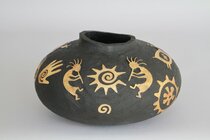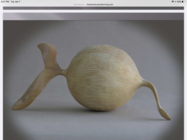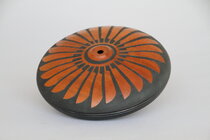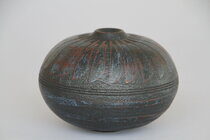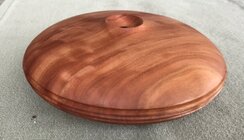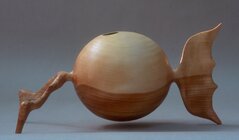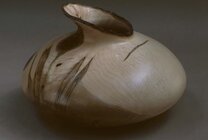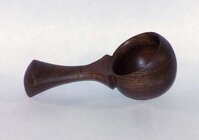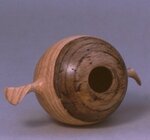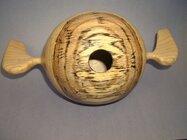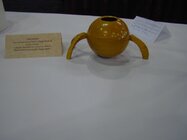In 15 years of turning, I’ve never turned a hollow form of any sort nor have I even held one in my hands. I love to look at them and admire them (and those who turn them) greatly.
Questions from a complete ignoramus:
1. Is it possible to turn a hollow form without special equipment/tools? I would think a swan neck tool is the bare minimum for entry…
2. In the hollow form world, what is most desirable? Thinness of the wall i.e. less weight? Or overall shape? Is it “better” to be very thin with a mediocre shape, or great shape with thicker walls?
3. What is an acceptable thickness for the walls? And are the walls supposed to be uniform thickness? It appears to me, if the bottom is as thin as the walls, many pieces may be very prone to rolling. Is a weightier bottom deemed inappropriate to the form or perhaps crucial to the form?
4. How does one compensate for the amount of tool that is required to hang over the tool rest? I assume this is where captured bar systems are required….
5. Do the hollow forms that are created by cutting blanks in half, turning out the centers, then gluing them back together, less valuable (perceived value or actual value) than the ones bored out with a single hole?
6. Is there a general rule as to what defines a “hollow form” piece? How large can the entry hole be before it just becomes a bowl with a large undercut rim?
7. To my eye, the very best hollow forms are the ones with no embellishments and I rarely see embellishment on the traditional hollow forms. Whether tall rocket shaped or low sitting flying saucer shapes, it’s rare to see turquoise, stone. Milliput, etc features…. Is this because the walls are so thin, or is it rather frowned upon?
8. For those who sell, is there a higher end market for the hollow forms? (I would hope so). How has selling hollow forms compared to your sales of “regular” bowls/platters?
Thank you for indulging me…. I look forward to hearing from you all.
Questions from a complete ignoramus:
1. Is it possible to turn a hollow form without special equipment/tools? I would think a swan neck tool is the bare minimum for entry…
2. In the hollow form world, what is most desirable? Thinness of the wall i.e. less weight? Or overall shape? Is it “better” to be very thin with a mediocre shape, or great shape with thicker walls?
3. What is an acceptable thickness for the walls? And are the walls supposed to be uniform thickness? It appears to me, if the bottom is as thin as the walls, many pieces may be very prone to rolling. Is a weightier bottom deemed inappropriate to the form or perhaps crucial to the form?
4. How does one compensate for the amount of tool that is required to hang over the tool rest? I assume this is where captured bar systems are required….
5. Do the hollow forms that are created by cutting blanks in half, turning out the centers, then gluing them back together, less valuable (perceived value or actual value) than the ones bored out with a single hole?
6. Is there a general rule as to what defines a “hollow form” piece? How large can the entry hole be before it just becomes a bowl with a large undercut rim?
7. To my eye, the very best hollow forms are the ones with no embellishments and I rarely see embellishment on the traditional hollow forms. Whether tall rocket shaped or low sitting flying saucer shapes, it’s rare to see turquoise, stone. Milliput, etc features…. Is this because the walls are so thin, or is it rather frowned upon?
8. For those who sell, is there a higher end market for the hollow forms? (I would hope so). How has selling hollow forms compared to your sales of “regular” bowls/platters?
Thank you for indulging me…. I look forward to hearing from you all.

